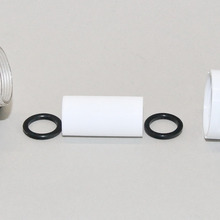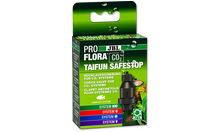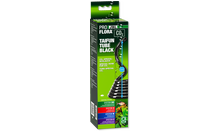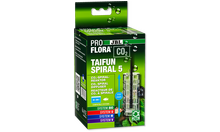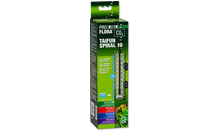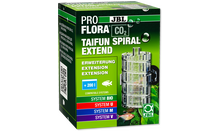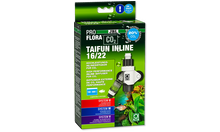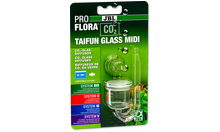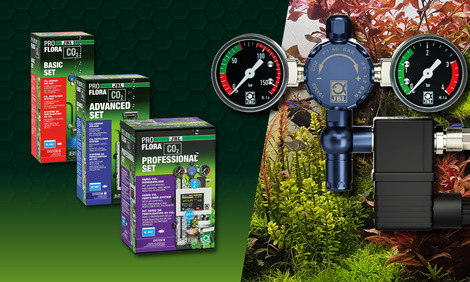Ideal nutrition for plants
Having the right CO2 concentration in the water is hugely important for aquarium plants. Carbon dioxide is the plants’ main nutrient and it fully promotes their growth. Plants use CO2 for photosynthesis and this supplies the water with essential oxygen. They prevent algae growth, remove pollutants, provide hiding places and reduce germs.
Efficient enrichment of the aquarium water with CO2:
Inside the diffuser is a special diaphragm through which the CO2 diffuses into the aquarium water, which is pumped back into the aquarium by the external filter. The very small CO2 bubbles dissolve very well in the water and save about 20 % compared to other CO2 diffusers.
Replacing the diaphragm
Due to sedimentation from the aquarium water, the efficiency of the diaphragm decreases over time. For this reason we recommend an annual replacement.
JBL PROFLORA CO2 TAIFUN INLINE MEMBRANE
Replacement diaphragm for CO2 TAIFUN INLINE diffuser
- Spare/replacement diaphragm for the CO2 inline diffuser JBL PROFLORA CO2 TAIFUN INLINE & the predecessor JBL ProFlora Direct
- Switch off the filter, unscrew the diffuser, insert the watered diaphragm, screw the diffuser back on, switch on the filter
- Special ceramic for particularly efficient CO2 diffusion and smallest CO2 bubbles for high effectiveness
- An annual replacement of the diaphragm is recommended, as its diffusivity changes over time
- Package contents: replacement diaphragm for all sizes of JBL PROFLORA CO2 TAIFUN INLINE (12/16,16/22,19/25), incl. 2 sealing rings

Visit our premium partners to fill / exchange your CO2 cylinders and purchase products from the JBL PROFLORA CO2 range.



